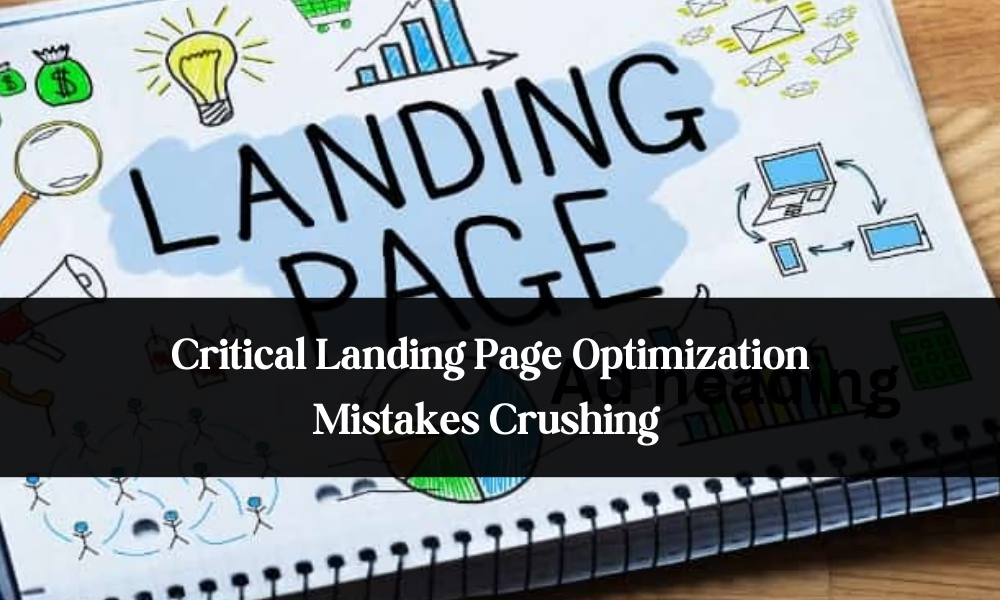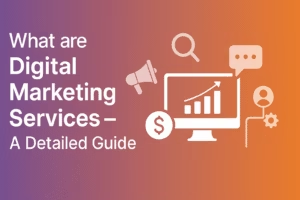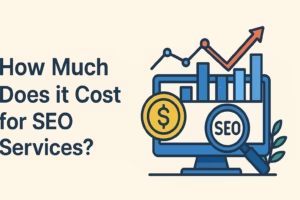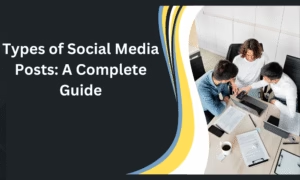Creating high-converting landing pages isn’t rocket science, yet countless businesses struggle with landing page optimization challenges that silently sabotage their marketing efforts. Whether you’re running paid campaigns or organic traffic strategies, these common mistakes can transform promising visitors into lost opportunities faster than you can say “bounce rate.”
The reality is sobering: according to recent industry data, the average landing page conversion rate hovers around 2.35%. However, the top 10% of landing pages achieve conversion rates of 11.45% or higher. What separates the winners from the losers? It often comes down to avoiding fundamental pitfalls that most marketers unknowingly make.
Furthermore, successful businesses understand that conversion rate optimization (CRO) isn’t just about tweaking button colors. Instead, it’s about creating seamless user experiences that guide visitors toward meaningful actions. Consequently, let’s explore the most destructive landing page optimization mistakes and discover how to fix them before they drain your marketing budget.
1. Slow Loading Speed: The Silent Conversion Killer
Nothing destroys user experience faster than a sluggish landing page. Moreover, research consistently shows that page load speed directly correlates with bounce rates and conversion performance. When loading times stretch from one second to ten seconds, bounce rates skyrocket by 123%.
Modern consumers expect lightning-fast experiences. Additionally, search engines factor loading speed into their ranking algorithms, making this a critical component of landing page SEO optimization. A slow page doesn’t just frustrate users—it actively works against your visibility in search results.
Common Speed Killers:
- Oversized images and graphics
- Bloated code and unnecessary plugins
- Poor hosting infrastructure
- Excessive redirects
- Unoptimized CSS and JavaScript files
To address speed issues, start by conducting a comprehensive website performance audit. Tools like Google PageSpeed Insights reveal specific bottlenecks affecting performance. Next, compress images, minify code, and consider upgrading your hosting solution. These improvements form the foundation of effective digital marketing strategies that drive real results.
Interestingly, websites ranking on the first page of Google load in approximately 1.65 seconds, while average websites take 8.6 seconds on mobile devices. Therefore, aiming for 1-1.5 second loading times isn’t just recommended—it’s essential for competitive performance.
2. Cognitive Overload: When Too Much Information Backfires
Cognitive overload represents one of the most overlooked common mistakes in landing page design. When visitors encounter overwhelming amounts of information, choices, or visual elements, their brains simply shut down. Consequently, they abandon the page without taking any action.
Professional marketers understand that successful landing pages follow the principle of singular focus. Every element should guide visitors toward one specific action, whether that’s making a purchase, downloading a resource, or scheduling a consultation. Meanwhile, cluttered designs create decision paralysis that kills conversions instantly.
Signs of Cognitive Overload:
- Multiple competing headlines
- Dozens of product options on one page
- Conflicting visual elements
- Information-heavy paragraphs without white space
- Too many navigation options
- Distracting visuals that compete for attention
The solution involves ruthless simplification. Remove unnecessary elements, streamline your message, and create clear visual hierarchies that guide the eye naturally toward your call-to-action. This approach aligns with proven digital marketing services methodologies that prioritize user-centric design.
3. Misaligned Messaging: Breaking the Scent Trail
Misaligned messaging occurs when your advertisement promises one thing, but your landing page delivers something entirely different. This disconnect, known as “breaking the scent trail,” confuses visitors and destroys trust instantly. Furthermore, it represents a critical failure in message match that professional marketers must avoid at all costs.
Consider this scenario: your Facebook ad promotes “50% off premium skincare products,” but visitors land on a generic homepage featuring multiple product categories. The messaging mismatch creates friction, causing potential customers to question your credibility and seek alternatives elsewhere.
Message Alignment Best Practices:
- Match landing page headlines to ad copy
- Use consistent terminology and phrases
- Maintain visual consistency between ads and pages
- Honor specific offers mentioned in advertisements
- Ensure the value proposition remains clear and prominent
- Create benefit-driven headlines that resonate with visitor expectations
Successful landing page optimization best practices require treating each traffic source as a unique conversation. When visitors click your ad, they’re essentially saying, “Tell me more about this specific thing.” Your landing page should continue that exact conversation seamlessly, reinforcing the initial promise that brought them there.
4. Weak Call-to-Action Buttons: Missing the Conversion Moment
Your call-to-action (CTA) represents the critical moment when browsers become customers. Yet surprisingly, many businesses treat CTAs as afterthoughts, using generic phrases like “Submit” or “Click Here” instead of compelling, action-oriented language.
Effective CTAs combine psychological triggers with clear value propositions. Instead of “Learn More,” try “Get My Free Marketing Audit.” Rather than “Subscribe,” consider “Start Getting Weekly Tips.” These subtle changes acknowledge what visitors receive in exchange for their action.
CTA Optimization Elements:
- Color contrast that makes buttons stand out
- Action-oriented verbs that create urgency
- Benefit-focused language that highlights value
- Strategic placement above the fold
- Size optimization for both desktop and mobile users
- Social proof elements near CTAs
- Trust signals that reduce friction
Furthermore, successful landing pages often feature multiple CTAs strategically placed throughout the content. This approach accommodates different decision-making speeds and ensures conversion opportunities aren’t missed. Additionally, businesses implementing comprehensive optimization strategies often see dramatic improvements in their overall marketing ROI.
5. Mobile Optimization Neglect: Ignoring Half Your Audience
With mobile traffic accounting for over 61% of web visits, mobile optimization isn’t optional—it’s essential. However, many businesses still approach mobile as an afterthought, creating frustrating experiences that drive potential customers away. Moreover, just making your website responsive isn’t enough anymore.
Mobile users face unique challenges: smaller screens, touch navigation, and often slower internet connections. Consequently, mobile-optimized landing pages require different design considerations than their desktop counterparts. Additionally, search engines now use mobile-first indexing, making mobile performance crucial for SEO success.
Mobile Optimization Essentials:
- Single-column layouts for easy scrolling
- Large, thumb-friendly buttons
- Compressed images for faster loading
- Simplified forms with minimal required fields
- Click-to-call functionality for phone numbers
- Touch-optimized navigation
- Mobile-first design approach
Testing your landing pages across various devices reveals important insights about user behavior. What looks perfect on a desktop computer might be completely unusable on a smartphone. Regular testing ensures your optimization landing page efforts deliver consistent results across all platforms, maximizing the effectiveness of your digital marketing services investment.
Get noticed online with a powerful SEO service that drives traffic and boosts conversions.
6. Trust Signal Deficiency: Failing to Build Credibility
Modern consumers are naturally skeptical of online claims and offers. Without adequate trust signals, even the most persuasive landing pages fail to convert visitors into customers. Trust signals provide the social proof and credibility markers that hesitant prospects need to move forward confidently.
Essential Trust Elements:
- Customer testimonials with photos and full names
- Industry certifications and awards
- Security badges and SSL certificates
- Money-back guarantees or risk-free trials
- Contact information and physical address
- Social media follower counts and engagement
- Press mentions and media coverage
- Case studies and success stories
- Client logos and partnerships
- Review scores from third-party platforms
Professional services businesses particularly benefit from showcasing expert insights and client success stories. These elements demonstrate competence and reliability, two crucial factors in purchase decisions. Similarly, e-commerce businesses should prominently display product reviews, rating systems, and purchase guarantees to overcome buyer hesitation.
7. Form Friction: Making Conversion Too Complicated
Lead generation forms represent the final hurdle between interest and conversion. Unfortunately, many businesses sabotage this crucial step by requesting too much information or creating unnecessarily complex form experiences. Additionally, poorly designed forms can increase abandonment rates by as much as 67%.
Form optimization requires balancing information collection with user convenience. While longer forms might provide more qualified leads, they also reduce overall conversion rates. The key lies in requesting only essential information initially, then gradually collecting additional data through follow-up interactions.
Form Best Practices:
- Limit initial forms to 3-5 essential fields
- Use smart defaults and auto-complete features
- Provide clear explanations for required information
- Implement real-time validation to prevent errors
- Offer multiple contact options (phone, email, chat)
- Use progress indicators for multi-step forms
- Include privacy statements and security assurances
- Test different field arrangements and labeling
Remember that every additional form field reduces conversion rates by approximately 7%. Therefore, carefully consider whether each requested piece of information is absolutely necessary at this stage of the customer journey. Businesses that optimize their forms effectively often see conversion rate improvements of 120% or more.
Implementation Strategy: Turning Knowledge Into Results
Understanding these common mistakes pitfalls is just the beginning. The real challenge lies in systematically auditing your current landing pages and implementing improvements that drive measurable results. Moreover, successful conversion rate optimization requires a structured approach rather than random experimentation.
Start by analyzing your highest-traffic landing pages using tools like Google Analytics and heatmap software. Look for patterns in user behavior: where do people spend the most time? Where do they typically exit? Which elements receive the most attention? Additionally, examine your bounce rate, time on page, and conversion funnel metrics to identify improvement opportunities.
Next, prioritize improvements based on potential impact. Speed optimizations and mobile responsiveness typically deliver the quickest wins, while message testing and trust signal implementation might require more strategic planning. Furthermore, consider implementing A/B testing protocols to measure the effectiveness of your changes systematically.
A/B Testing Framework:
- Formulate clear hypotheses based on data
- Test one element at a time
- Ensure statistical significance before drawing conclusions
- Document results for future reference
- Create a continuous testing calendar
Finally, implement changes systematically rather than all at once. This approach allows you to measure the individual impact of each improvement and build a library of best practices landing page optimization techniques that work specifically for your audience. Professional teams often benefit from partnering with experienced digital marketing services providers who can accelerate this optimization process.
Advanced Optimization Techniques: Beyond the Basics
Once you’ve addressed the fundamental mistakes, consider implementing advanced CRO techniques that can further boost your performance. Heat mapping and user session recordings provide invaluable insights into visitor behavior patterns. Meanwhile, multivariate testing allows you to test multiple elements simultaneously for more complex optimizations.
Advanced Strategies:
- Dynamic content personalization based on traffic source
- Exit-intent popups to capture abandoning visitors
- Progressive profiling for form optimization
- Behavioral triggers for targeted messaging
- Customer journey mapping for holistic optimization
Additionally, consider the psychological principles that influence conversion behavior. Scarcity (limited-time offers), social proof (testimonials and reviews), and authority (expert endorsements) can significantly impact visitor decision-making when implemented thoughtfully.
Measuring Success: KPIs and Metrics That Matter
Effective landing page optimization requires tracking the right metrics consistently. While conversion rate is the primary goal, other indicators provide valuable insights into user behavior and optimization opportunities. Consequently, establish a comprehensive measurement framework that captures both quantitative and qualitative data.
Key Performance Indicators:
- Primary conversion rate (main goal completions)
- Secondary conversion rate (micro-conversions)
- Bounce rate and exit rate
- Average time on page
- Pages per session
- Cost per conversion
- Customer lifetime value impact
- Return visitor conversion rates
Moreover, segment your data by traffic source, device type, and user demographics to identify optimization opportunities. Mobile users might behave differently than desktop users, while social media traffic often converts differently than search engine visitors. Understanding these nuances enables more targeted optimization efforts.
Our social media management services help you engage your audience and drive consistent results across platforms.
The Bottom Line
Landing page optimization success doesn’t happen overnight, but avoiding these seven critical mistakes immediately improves your conversion potential. Remember that small improvements compound over time, turning marginal gains into significant competitive advantages.
The businesses that consistently outperform their competitors understand that landing page optimization is an ongoing process, not a one-time project. By staying vigilant about these common mistakes and continuously testing new approaches, you’ll build a conversion-focused marketing system that drives sustainable growth.
Whether you’re just starting your optimization journey or looking to take your existing efforts to the next level, partnering with experienced professionals can accelerate your progress and help you avoid costly mistakes. The investment in proper landing page optimization best practices pays dividends through increased conversions, lower acquisition costs, and improved customer lifetime value.
Remember: every visitor to your landing page represents an opportunity. Make sure you’re giving yourself the best possible chance to turn that opportunity into measurable business results. Through systematic optimization and continuous improvement, your landing pages can become powerful conversion engines that drive consistent business growth and maximize the return on your digital marketing services investment.
Ready to transform your business with professional web marketing services? Contact Mighty Musketeers today for a comprehensive digital marketing strategy tailored to your unique business needs.








